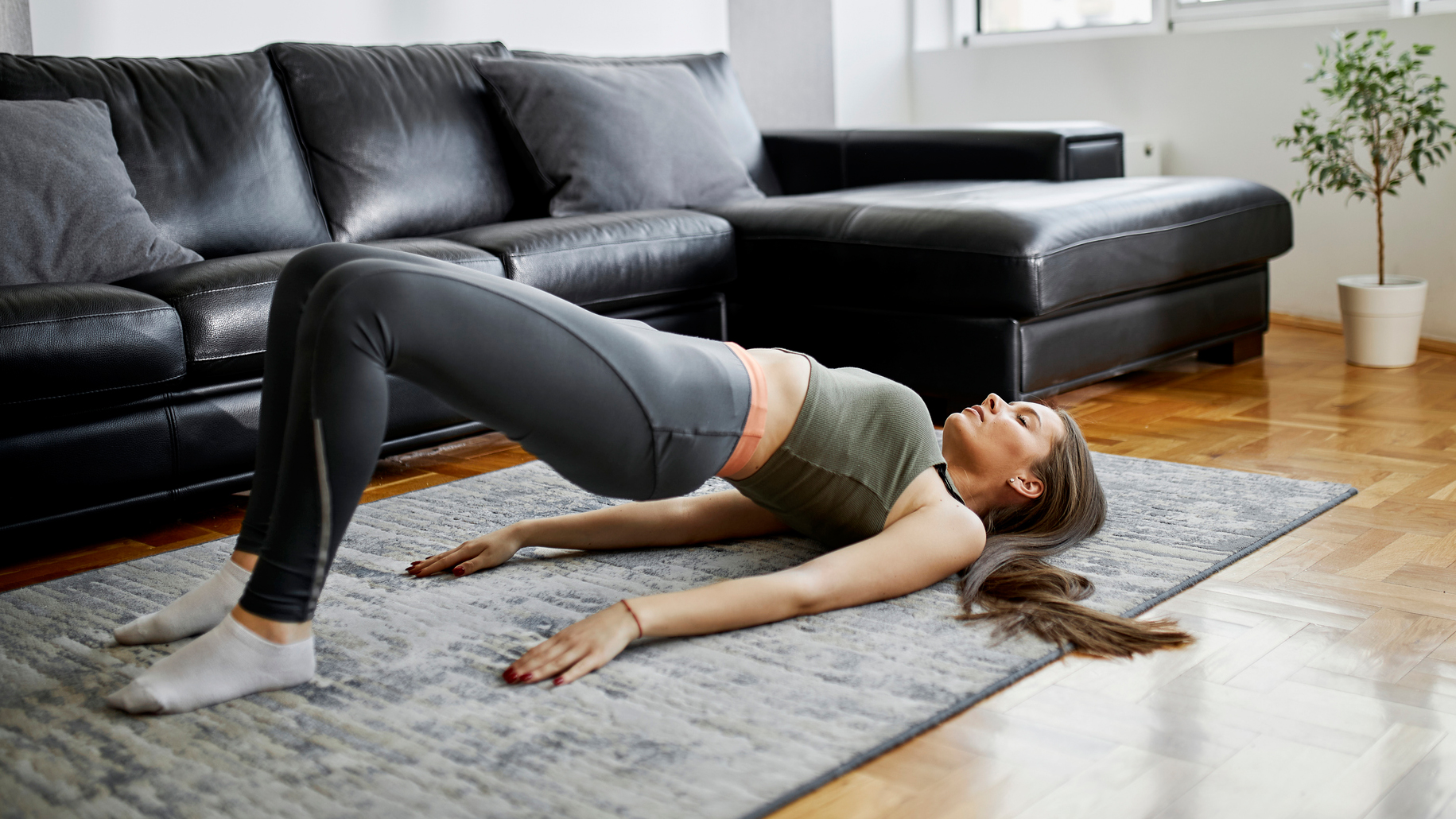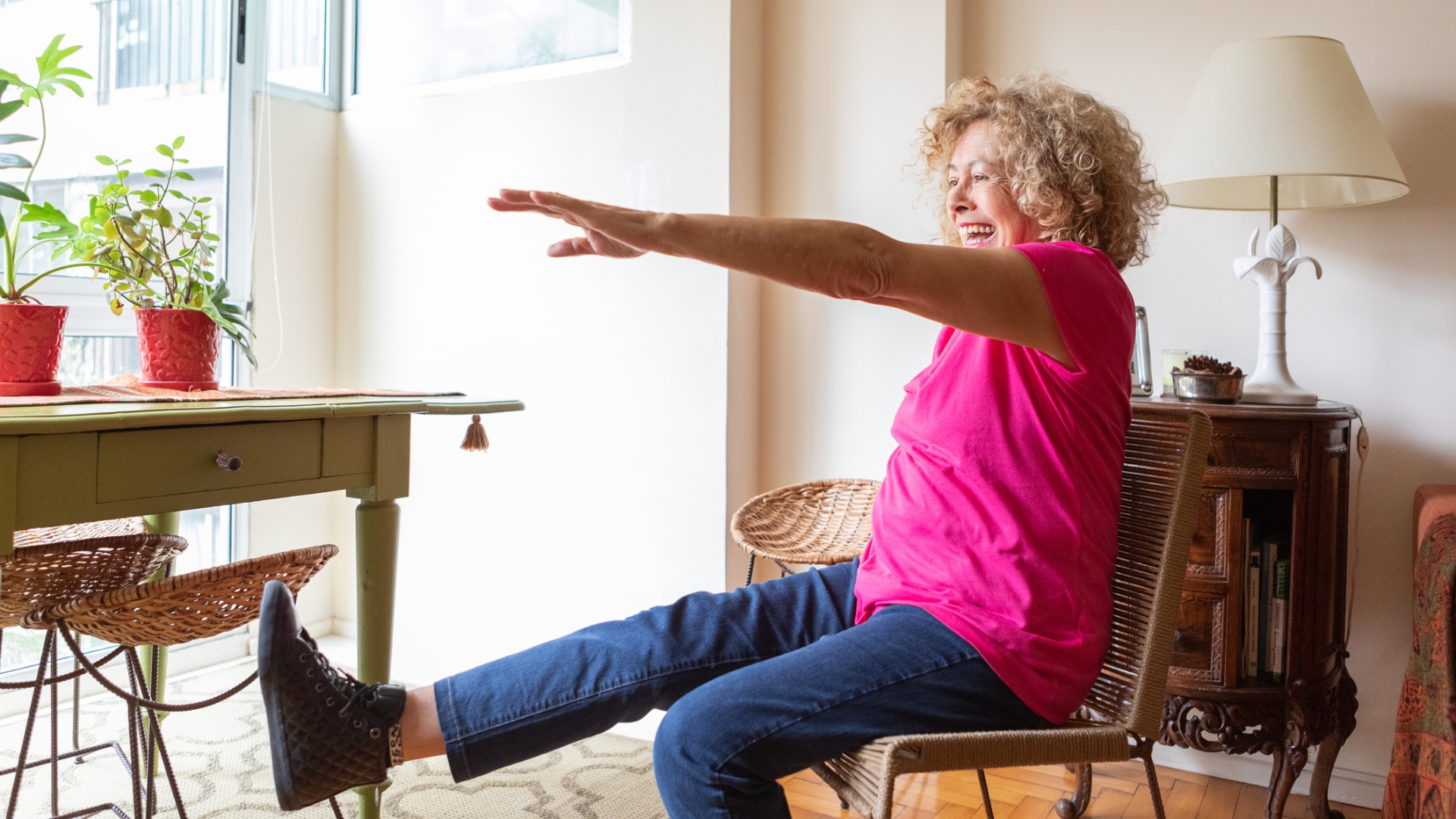A 2-minute workout to exercise your core, glutes & prevent dangers of sitting down
Just two minutes' working on your core and lower body can help undo the damage of sitting and protect your heart


We need to be sitting less, and moving more. If you've clicked on this article, you're probably aware of that. Too much sitting has been heralded for years as "the new smoking" with sedentary lifestyles linked to increased risk of cancer, hypertension and prediabetes, being associated with weight gain and reduced mobility.
Therefore, it's encouraging to know you can start taking small steps. It would be great to get your shoes on and start hitting the roads in a bid to offset your sedentary life (and we recommend the best running shoes for men or best running shoes for women lists, if you're thinking of starting) but for now, you can do something today to offset the damage of sitting.
Research from the medical journal PLOS One found that regular activity breaks, classed as a two-minute walking break every 30 minutes, lead to increased health benefits and reduced risk from all the sitting dangers. A lot of people simply swap sitting with standing, using devices such as standing desks to alleviate prolonged periods of sitting, but it's still an extended time of inactivity.
The researchers found "regular activity breaks induce increases in blood flow, shear stress and improvements in postprandial metabolism that are associated with beneficial adaptations."
"Physical activity and sedentary behaviour messages should perhaps focus more on the importance of frequent movement, rather than simply replacing sitting with standing."
Why spend two minutes walking when you could also train the muscle groups that are most affected by sitting down, such as the glutes, hamstrings, core and lower back? This two-minute workout from Louisa Drake is the perfect work-from-home fitness break when you're sick of staring at your screen:
Watch the two-minute workout below:
Why do this workout?
Filmed exclusively for Fit&Well, Drake's method stretches the hamstrings, helping blood to flow to the legs after a long period of sitting. Research published in the Journal of Physiology found stretching helps heart health, so you're still getting cardiovascular benefits even if you're not walking.
Get the Fit&Well Newsletter
Start your week with achievable workout ideas, health tips and wellbeing advice in your inbox.
In addition, you're training your glutes and the "trunk" of your body, the core and lower back, which are not engaged while sitting on a chair. These muscles are what will keep you in good health for years to come, as they're the muscles engaged when you're doing something as simple as rising from a chair, or walking up a set of stairs. Want to be healthy and active in your old age? Core strength and glutes will help. Plus, you'll get great abs and a pert bum.
Finally, just make sure when you are sitting, you've got good lumbar support and the right environment for working. The best office chair will support your back and arms, while the best desk lamp will ensure you don't get eye strain as a result of forcing yourself to look at a bright screen without an ambient, correctly angled light source.
Matt Evans is an experienced health and fitness journalist and is currently Fitness and Wellbeing Editor at TechRadar, covering all things exercise and nutrition on Fit&Well's tech-focused sister site. Matt originally discovered exercise through martial arts: he holds a black belt in Karate and remains a keen runner, gym-goer, and infrequent yogi. His top fitness tip? Stretch.

